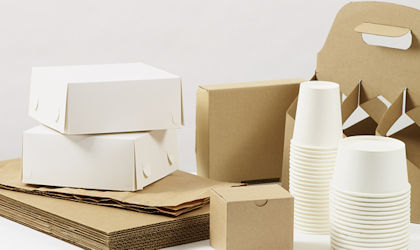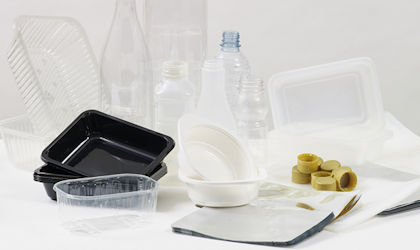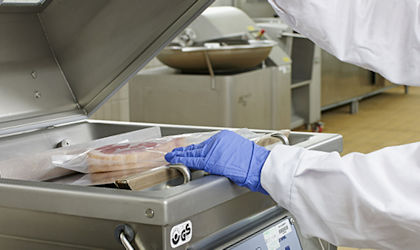Food packaging metals testing
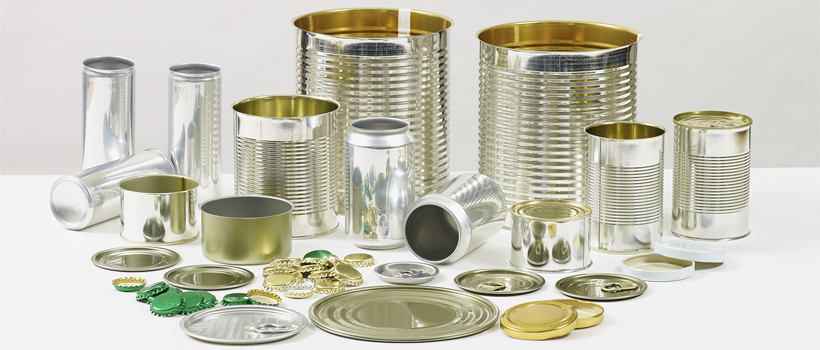
To discuss your needs
Testing of canned products within metal packaging may be required for various reasons including product/pack compatibility, spoilage assessment and integrity checks on the container and seams, mechanical strength requirements, compliance to regulations and functionality tests. Outlined below is a non-exclusive list of common tests carried out when assessing metal packaging.
Biotest
Biotesting is a form of comparative container integrity testing used particularly during the development and introduction of new or modified forms of containers.
Containers are filled with a microbiological nutrient material and heat processed. The containers are then brought into contact with contaminated cooling water with a known microorganism. Samples are stored and checked for spoilage.
Campden BRI has facilities for packing the containers, processing, storage and microbiological testing.
Drop tests
Drop tests can be conducted on packaging in various orientations and from a range of heights to determine its impact strength.
Dye penetration testing
Dye penetration testing can detect leaks in packs down to approx 10 microns and are conducted over a period of 24 hours. These tests are especially effective for testing leaks in the seal area of the pack.
Torque testing
Torque testing on (bottle and jar closures) measures the amount of force required to open a jar or bottle closure must balance the importance of closure integrity against the requirement of convenience for consumers wishing to open the packs. A Mecmesin Tornado digital closure torque tester is used for measuring application and removal closure torques.
Strength and integrity
Seam sectioning / double seam evaluation
The production of a high-quality double seam in food cans is dependent on several factors, including conformity of the can and end specifications; the quality of the seamer tooling and its compliance with the can and end being used and the condition of the seaming machine and setup of the seaming rolls, lifter pressure and other components. A problem in any one of these factors can contribute to seam defects that have an adverse effect on the ability of the can to withstand contamination and prevent the product from leaking or reduce its shelf life. Campden BRI can conduct manual seam assessment and seam sectioning to evaluate the quality of the can seams and their conformance to specifications.
Leak testing of cans
Checking the quality of the double seam can be carried out on receipt of new containers for 3-piece cans to assess the can makers seam or post processing/post seaming to assess the canners seam. Air pressure leak testing can be used to pressurise the can internally with a regulated pressure and monitor the can for leakage when submerged under water. This method is often used in conjunction with seam evaluation to allow for pin point analysis of a certain area if leakage is noted.
Side wall and vertical axis strength testing
Metal cans are often used for their rigidity and strength along with many other factors. Strength testing of cans can be carried out to determine the top load capability by testing its vertical axis strength. Side wall strength is an important characteristic of cans as they are required to withstand implosion and expansion during retort conditions.
Determination of vacuum present in cans
Filled cans are processed to kill off microorganisms, as the cans are cooled this creates a partial vacuum within the can. Vacuum gauges can be used to determine the level of vacuum present within a can and if this meets the criteria which is often set by the canner. A vacuum may also be pulled on sealing of the can if using a vacuum can seamer in which a cross check may be required to ensure the vacuum level is at the level expected by the can seamer.
Head space gas analysis
Gas headspace analysis can accurately measure the oxygen, carbon dioxide and balance gases composition in the headspace of sealed flexible or rigid packages, including metal packaging.
Plate thickness
The thickness of the metal used and uniformity of the metal on cans produced using a Drawn & Wall Ironed (DWI) process is important when assessing the metal thickness. Campden BRI has a series of Mitutoyo micrometers and can accurately measure the plate thickness to 0.001mm.
Checks against specifications
Campden BRI has a series of gauges available and accurate balances allowing for cross checks against supplier specifications to provide an independent assessment against a specification received from the packaging supplier/manufacturer. Common tests may include dimensional checks, weight checks, strength characteristics and physical performance properties.
Can lacquers
Can lacquer integrity
Can lacquers are widely used to provide protection to both the product and the can and eliminate or reduce negative product / pack interaction. For this reason, it is important that the lacquer is applied across the entire surface leaving no underlying metal exposed.
Lacquer weight determination
Lacquers and coatings are used widely to protect the can internally and externally from corrosion and to protect the product internally from elemental transfer from the container into the product. Lacquer weight should be displayed within the final can specification displaying a weight as g/m2. Campden BRI can carry out tests to ensure the lacquer applied meets the stated figure on the specification.
Lacquer adhesion testing
Once the lacquer has been applied it is vital that it has been cured correctly ensuring correct crosslinking and good adhesion to the underlying metal. Lacquer adhesion testing measures whether the lacquer can be removed using a tape test set up.
Can end checks
Score line analysis
Easy open ends (EOE) are commonly used as a convenience function on metal cans allowing the consumer to have quick access to the contents of the can. To enable this function the can end is accurately scored around the required area, thinning out the metal. This makes the end easy to open when punctured using a ring pull tab and allows the consumer to peel away the lid. Campden BRI can cross section the score line and measure the depth of the score line against the thickness of the can end using a scanning electron microscope (SEM) to obtain images and accurate measurements.
Determination of compound lining weight distribution
To ensure a hermetic seal is achieved a compound lining is applied within the ends of cans which acts as a filler material to fill any free space when creating the double seam. It is important that the compound lining is correctly and evenly distributed around the inside of the can end as too much may cause seaming issues and too little may leave areas exposed and at risk of leakage. Campden BRI can assess can ends to determine the total weight of the compound lining present by using accurate balances capable of weighing up to 5 decimal places.
Ring pull analysis of easy open ends
An easy open end (EOE) is applied to cans to provide a convenient function to allow consumers to easily open the end and provides full access to the food. An important factor based on this would be the force required to open the can. Campden BRI can carry out testing on ring pull cans to determine the force required to open at two test conditions including a 90°peel and a 45° peel.
Corrosion assessment and investigation
Scanning electron microscopy
Scanning electron microscopy offers imaging, mapping and elemental analysis which help with the examination of defects such as pin-holing, stress cracks and breaks in the lacquers. Imaging at high magnifications can help identify and visualise the type of defect. These images can then further help to identify if the defect originated externally or internally and if the integrity of the material has been compromised.
Elemental analysis
Elemental analysis and mapping can help identify the presence and distribution of compounds that may have contributed to the defect, such iron rust or the build-up of chlorine. This analysis would also demonstrate the break in lacquer and exposure of the underlying metal.
You may also be interested in
Key services
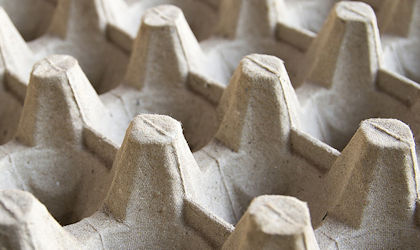
Package strength and integrity
Packaging must be able to withstand the rigours of distribution and storage.
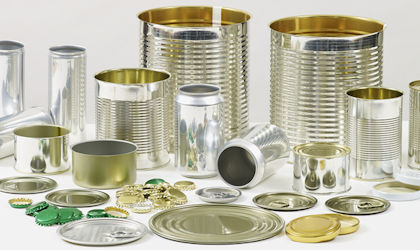
Metal
Testing of canned products within metal packaging may be required for various reasons including product/pack compatibility.
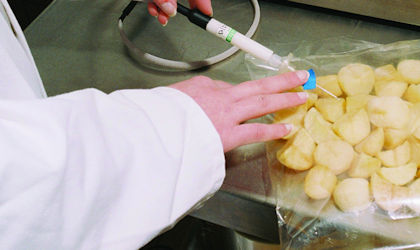
Modified atmosphere packaging
Ensuring the correct gas composition and gas:product volume ratio is critical.

Packaging down the microscope
Microscopy can use a range of techniques to examine packaging materials including plastic and metal.

Packaging migration and taint analysis
Packaging must not transfer its constituents into food to the detriment of the food's quality.
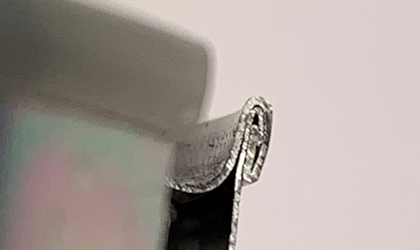
Metal can double seam assessment and troubleshooting
We can assess internal and external dimensions for any defects and breaching of critical seam parameters
Packaging training courses
Explore our packaging related courses including; Packaging technology for non-packaging technologists and MAP (modified atmosphere packaging) – an introduction
Are you getting the most from your Membership?
Watch our membership FAQ videos and find out more about Member Service Account spending, Member Interest Groups, help and advice
Where we refer to UKAS Accreditation
The Campden BRI group companies listed below are accredited in accordance with the recognised International Standard ISO17025:2017 by the United Kingdom Accreditation Service (UKAS). The accreditation demonstrates technical competence for a defined scope of methods, specific to each site, as detailed in the schedules of accreditation bearing the testing laboratory number. The schedules may be revised from time to time and reissued by UKAS. The most recent issue of the schedules are available from the UKAS website www.ukas.com. Campden BRI (Chipping Campden) Limited is a UKAS accredited testing laboratory No. 1079


